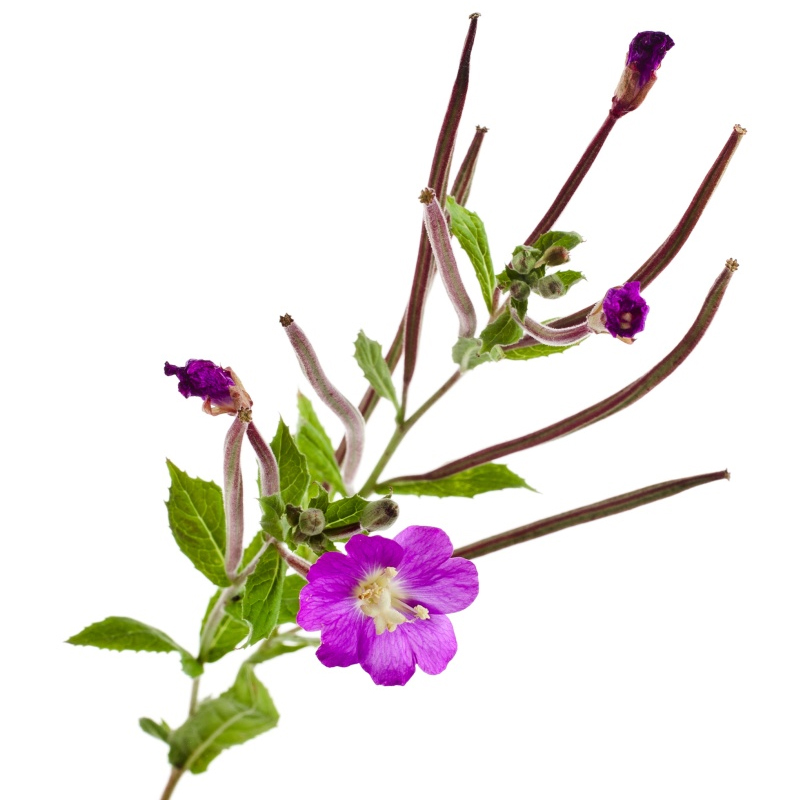Hoary Willowherb
Epilobium parviflorum L. – Onagraceae

Hoary willowherb is commonly used as a medicinal plant in Central Europe. It is a perennial plant, and it is widespread throughout Europe. Its tree reaches a height of 30 cm to 80 cm, it is upright and covered with hairs. The leaves are long, oval and toothed, growing opposite each other. The tiny flowers are four petals, pale pink or purple in color, usually blooming from June to August. The fruit is a pod containing small black seeds.
The medicinal part is the aerial part of the willow and contains many active ingredients, namely: phytosterols, polyphenols, tannins, flavonoids (myricetin, quercetin, kaempferol), beta-sitosterols and their esters and glycosides, as well as organic acids (gallic, egalic, caffeic, chlorogenic). Research has shown that the main tannic component of willow is the macrocyclic tannin, oenotein B, and the main flavonoid component is myricitrin.

This herb is used in the treatment of prostate disorders and its use is especially recommended for patients diagnosed with benign prostatic hyperplasia. The literature mentions the antimicrobial and anti-inflammatory activity (COX-inhibitor) of willow, so besides its positive effect on prostate disease, it is also recommended for bladder and kidney diseases. As for the anti-microbial activity, it has been proven that willow has a strong effect on bacteria and fungi, such as: Staphylococcus aureus, Enterococcus faecalis, Escherichia coli, Pseudomonas aeruginosa and Candida albicans. The presence of flavonoids and sitosterol inhibits the synthesis of prostaglandins and thus inhibits the onset of an inflammatory reaction. It has been proven that the main tannin component, oenotein B, inhibits the enzyme 5α-reductase, one of the main mechanisms of action of conventional drugs for the treatment of benign prostatic hyperplasia. Benign prostatic hyperplasia is considered a complex disease, with a number of symptoms. It is considered to be an endocrinological disorder caused by an imbalance of hormones, but also by an increased concentration of prostaglandins and leukotrienes. All this suggests that willow in such conditions has a very justified application, due to its antioxidant and anti-inflammatory effects.
Cancer is the second leading cause of death in the world, after cardiovascular diseases. Current therapeutic procedures used in the treatment of oncological diseases carry with them a large number of unwanted reactions, so there is an increasing effort to develop natural preparations that would be of great importance in the prevention and treatment of these diseases. Among these plants, the willow plant, species Epilobium parviflorum, was found as the subject of research, which showed a significant positive effect in the treatment of prostate cancer due to its antiproliferative and apoptotic effect.
